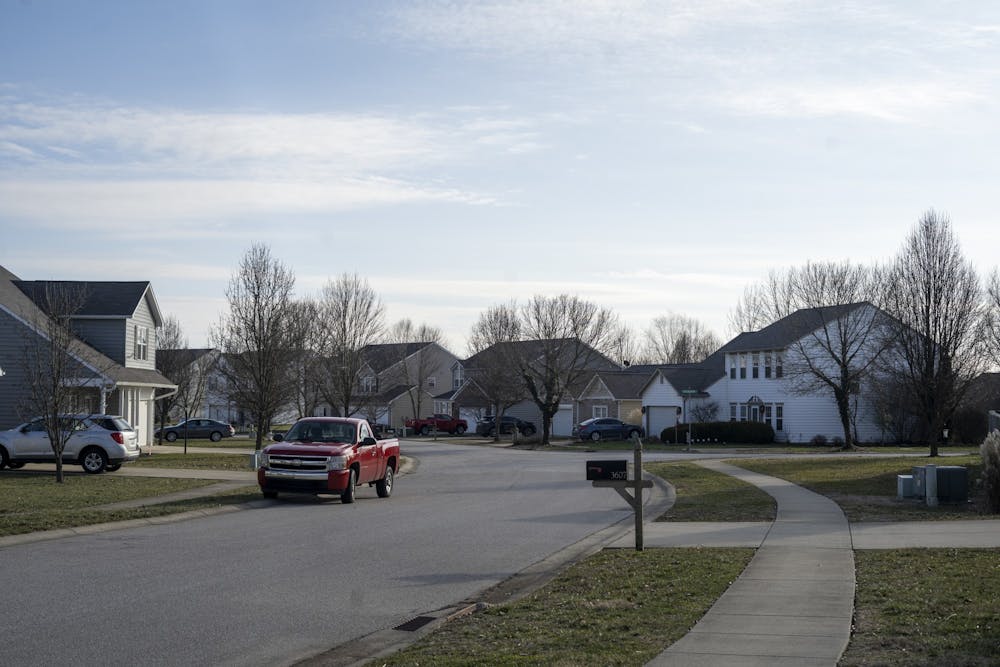Wracked by increasingly high demand and low supply, Bloomington’s housing market is the least affordable in the state.
The U.S. Department of Housing and Urban Development defines affordable housing as costing no more than 30% of one’s income. In order to meet this benchmark, however, Bloomington residents must work a full-time job at $17.69 an hour, according to the National Low Income Housing Coalition.
The evidence shows a growing crisis, and Bloomington must aggressively take action to ensure that residents can comfortably live and work in the city. In particular, Bloomington should raise wages and rezone land reserved for single families to allow more housing flexibility.
According to the Annex Group, an Indianapolis-based housing development firm, 69% of Bloomington’s renters live in unaffordable homes. For many low-income residents, this doesn't leave enough money for essentials, such as groceries or utilities.
Bloomington's problem is part of a nationwide trend. According to ATTOM, a property data company, roughly four in five U.S. housing markets are seeing home prices rise faster than wages. A 2019 study by the National Low Income Housing Coalition found that a full-time, minimum-wage earner cannot afford a “modest” two-bedroom apartment in any county nationwide without spending more than HUD's threshold for the definition of "affordable housing."
The pressures on Bloomington’s housing market are enormous. Over the next 20 years, Bloomington’s 2018 Comprehensive Plan predicts that the population, estimated to be around 85,000 in 2018, will surpass 100,000 and that the city will require 12,000 additional housing units. Average rent increased by nearly 40% from 2007 to 2017. Due to lack of affordability, 30,000 workers commute into the city each day.
IU and its large student body have also put a considerable strain on the city’s housing, contributing to higher prices and lower supply.
The increased demand for student and luxury housing has had complicated consequences.
The Annex Group found that student and luxury housing have made up nearly all new multifamily units built in Bloomington in the ten years leading up to 2018. On one hand, student and luxury housing out-prices middle- and low-income families. On the other hand, allowing for more student and luxury housing could increase the population density of those zoning districts, thereby freeing up space for more affordable housing.
With such high prices, people experiencing homelessness in Bloomington have little hope of being able to afford a place to live. Just this past week, a homeless camp caught fire in Bloomington. This incident reflects the dangers of living without a home and highlights the need for housing that is accessible to all. The most extreme consequence of unaffordable housing, after all, is homelessness itself.
A 2017 study found a strong correlation between greater rent burdens for low-income households and high income inequality. Without increasing wages, the housing crisis in Bloomington and in the U.S. is likely to continue unabated.
“We know that at virtually every income band below the wealthy there are housing pressures in Bloomington,” Mayor John Hamilton told WFIU in May.
In the past few years, Bloomington has added or rehabbed more than 600 affordable housing units, but that falls short of the estimated need for 2,700 affordable homes. The Bloomington Plan Commission approved a new Unified Development Ordinance earlier this month that made it easier to build accessory dwelling units, which are housing additions often used for other family members.
However, the new UDO is not enough.
The city must do more to tackle its housing crisis, which will need to include amending its zoning laws to make development easier. On Wednesday, the Bloomington City Council and Land Use Committee will meet to discuss reclassifying a commercial lot as a Planned Unit Development. A PUD encourages flexibility in development and allows for residential, commercial and industrial use.
With a crisis of this magnitude, the city’s actions must be two-fold. Bloomington desperately needs both new affordable development, which will increase supply and lower prices, and higher wages for its residents. The problem is complicated, but parts of the solution are clear: Bloomington must rezone land to allow for flexible development and support local, state and national action to raise wages, including an increase of the minimum wage.
Continuing down the present path means ever-increasing rents for us all; it is unsustainable for the city, its economy and its residents.
Kyle Linder (he/him) is a junior studying journalism and international relations. He plans to pursue a career in media.






